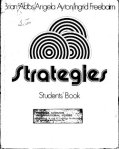“It’s self-evident,” wrote an MA student of mine recently, in an online forum, “that most learner errors are caused by mother tongue interference”. Is it really self-evident? It was certainly self-evident in the mid-twentieth century, when the notion of interference reigned supreme. But the advent of interlanguage studies put paid to that. The new science of error analysis (as distinct from contrastive analysis) suggested that many – some would say most – errors are the effect of developmental processes and performance demands, and have nothing to do with the learner’s L1. This is evidenced by the fact that many errors are shared by learners from different language groups, and occur in a similar developmental sequence and under comparable processing conditions.
Nevertheless, the idea that errors are caused by negative transfer is a persistent one and is still invoked in order to justify proscribing translation activities in the classroom (see T is for Translation). I was intrigued, therefore, to find that the case against L1 interference in fact predates the work of Pit Corder and Jack Richards in the 1960s and 70s, judging by a book I found in a second-hand bookshop in Nicosia this week. (The photo shows Büyük Han, the restored Ottoman inn in one corner of which the bookshop was nestled). The book is called Common Errors in English: Their Cause, Prevention and Cure (!), by F.G. French (published by OUP in 1949). The author states his case thus:
The argument here presented is that if errors are due … to cross-association, then the Japanese form of error should be one thing and the Bantu form quite another…. But that is not the case. .. The collection of ‘common errors’ … proves that the errors which exasperate teachers of English are indeed ‘common’.
French adds: “In seeking the source of error in the vernacular, the teacher is searching in the wrong field. The fact that the errors are common indicates that they have a common cause”.
 This ‘common cause’, according to French (although he doesn’t use the term) is false hypothesizing, including over- and under-generalising. (The antidote that the author suggests, by the way, is much more typical of its time: he recommends the ‘drilling-in’ of correct forms, and the ‘drilling-out’ of errors, all of which involves “considerable trouble and constant vigilance”).
This ‘common cause’, according to French (although he doesn’t use the term) is false hypothesizing, including over- and under-generalising. (The antidote that the author suggests, by the way, is much more typical of its time: he recommends the ‘drilling-in’ of correct forms, and the ‘drilling-out’ of errors, all of which involves “considerable trouble and constant vigilance”).
In discussing this topic on the bus from Nicosia to Kyrenia en route to the conference dinner, Nick Jaworski pointed out, that if transfer were the explanation, why is it that his Turkish students willfully produce errors like *I went Antalya, when the analogous verb + prepositional phrase exists in Turkish (even if the preposition is attached as a suffix)? The same might be asked of the commonly attested *I working, *the boys playing etc, by speakers of languages, like Spanish, that have a matching auxiliary construction: estoy trabajando, los niños están jugando…
But is the case for interference really dead and buried? Isn’t it a fact that many (if not most) learner errors are – as my student suggested – directly traceable to L1 influence?















Recent comments